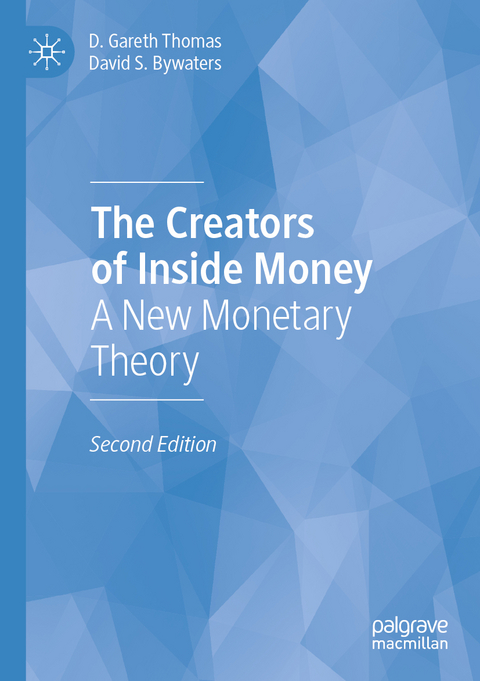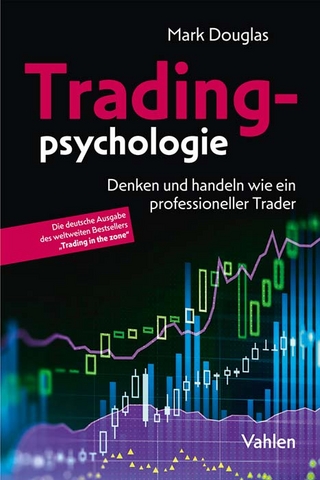
The Creators of Inside Money
Springer International Publishing (Verlag)
978-3-030-70368-4 (ISBN)
This second edition updates and extends the original foundations of the loanable funds model. It develops a new monetary model of inside money, which is created by the commercial (or retail) banks, drawing on the events of 2007/08 that led to the Great Recession and fragile economy of today. Coronavirus is likely to cause another downturn of economic activity, from the perspective of late 2020 as this is written. That will represent a long-period of subpar, anaemic growth, which has not been satisfactorily explained by the traditional theory in the form of neo-classical analysis. The reason may lie with the adoption of a body of theory based primarily on a barter system of exchange but sometimes with one commodity used as money to try to explain a dynamic, monetary economy of today. Money has evolved from a system of barter to become a medium of exchange based on fiat money and credit currency underpinned by legal tender, and therefore, a creature of law. If households and firms lose confidence in the banking system, they can withdraw their deposits in the form of cash as a medium of exchange, which must be accepted in exchange for goods and services as legal tender.
This book highlights the importance of how money is created or destroyed endogenously and derives the loanable supply of funds in conjunction with the demand within a revised analysis of monetary theory, with a new emphasis on portfolio theory. It applies critical thinking and the realization of a more precise formulation of the loanable funds theory to final year and postgraduate students in particular, with various features systematically added such as the catastrophe framework and Minsky's theory of changing states in an attempt to derive a fully dynamic model. There is a new framework using aggregate demand and supply analysis to explain inflation. This will be reinforced at each stage by the inclusion of revised and updated case studies, graphs and figures to give an international setting and applicationD. Gareth Thomas is a Senior Lecturer in Economics at the University of Hertfordshire where he has been since 1990. He received a BA (Hons.) degree in Social Sciences from the Central London Polytechnic (now the University of Westminster), and a MSc degree in Economics from Birkbeck College, University of London, alongside a Postgraduate Certificate in Education from St. Mary's College, Institute of Education, University of London. Finally, he received a PhD in the econometric modelling of real investment from the University of Hertfordshire. Prior to joining the Hertfordshire Business School, he was a schoolteacher and the Head of Economics at Longdean School, Hemel Hempstead. His research interests include econometrics and monetary and health economics. He is the author of a number of research articles and has presented at numerous conferences. In 2010, he was highly commended for teaching excellence as Tutor of the Year by the University of Hertfordshire. David Bywaters is a retired senior lecturer at the University of Hertfordshire, who earlier worked in the Statistics and Business Research department of the British Post Office, and later British Telecom, with a B.A. in Mathematical Economics from Essex University, and an M.A. in Political Economy from Middlesex University.
An overview, setting the scene for the need for a financial system.- The commercial banks and the money supply process.- The mechanism behind the money multiplier and the market for loanable funds.- The demand for money holdings by firms and households.- Rates of interest and the new monetary theory of loanable funds,- The term structure of interest rates.- An Econometric Investigation of term Structure and the real economy.- The loanable funds cycle and the variability of the deposit base.- Modern portfolio theory applied to the loanable funds market.- Rebuilding the theoretical model on credit with inflation.- Covid-19.- The conclusions.
| Erscheinungsdatum | 09.07.2022 |
|---|---|
| Zusatzinfo | XXVII, 223 p. 52 illus., 13 illus. in color. |
| Verlagsort | Cham |
| Sprache | englisch |
| Maße | 148 x 210 mm |
| Gewicht | 334 g |
| Themenwelt | Wirtschaft ► Betriebswirtschaft / Management ► Finanzierung |
| Betriebswirtschaft / Management ► Spezielle Betriebswirtschaftslehre ► Bankbetriebslehre | |
| Wirtschaft ► Volkswirtschaftslehre ► Finanzwissenschaft | |
| Wirtschaft ► Volkswirtschaftslehre ► Makroökonomie | |
| Schlagworte | Catastrophe framework • commercial banks • credit • credit risk • Depositors • Financial instability • Inflation • Modern Portfolio Theory • Monetary Economy • Money Supply • Real economy • Retail banks |
| ISBN-10 | 3-030-70368-1 / 3030703681 |
| ISBN-13 | 978-3-030-70368-4 / 9783030703684 |
| Zustand | Neuware |
| Haben Sie eine Frage zum Produkt? |
aus dem Bereich


